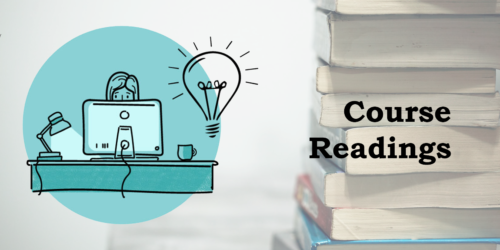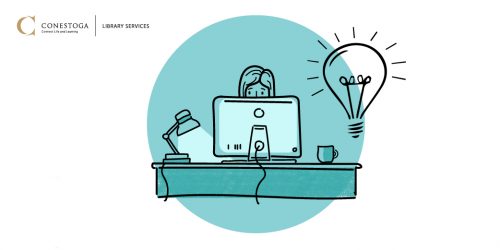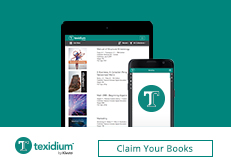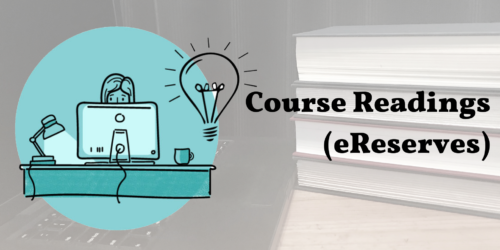
Active Reading Strategies for Digital Readers
Learners will score lower in a comprehension test of a digital text compared to a paper text. Why might this be? Often, digital readers do not transfer effective reading habits from paper-based reading to digital reading. Learners may read more shallowly on digital media, and do not effectively practice summarizing, note-taking and mental processing skills that they are more accustomed to exerting with paper-based books (Kong, Seo and Zhai, 2018; Delgado et al., 2018). Learn more about why digital reading is so challenging.
This doesn’t mean that we shouldn’t read digital texts, or that eTexts and OERs are problematic. Instead, it indicates that post-secondary learners will benefit from scaffolded learning activities that cultivate their use of active reading strategies with digital texts. These can be complemented with metacognitive reading strategies to support their comprehension and cross-application of digital content.
This post aims to provide ideas to help you build lesson plans and courses that incorporate active reading strategies. We will look at SQ3R, an evidence-supported literacy framework (Sudarsono & Astutik, 2024; Asiri & Momani, 2022; Nabilla & Asmara, 2022). Using this framework, this post will propose different activities you can incorporate directly into your planning.
If you’re newer to using an eText or other digital text, learn more about transitioning to using a digital text. This post will also refer to stages of the BOPPPS lesson planning model.
In this post
SQ3R: A framework to guide active reading activities
The SQ3R reading method (Robinson, 1941) is a structured approach to reading that aims to improve comprehension and retention of information. The acronym SQ3R stands for Survey, Question, Read, Recite, and Review. This method encourages active reading within a text and is used by learning support staff within the college. Here, we will use it as a framework to think about our semester with the learners and text, using it to choose the active reading strategies we employ in our lesson plans.

Below is an overview of each stage of the active reading process.
- Survey: Before reading, skim the material to get an overview of the main topics and ideas. This helps to establish a framework for understanding the content.
- Question: Formulate questions based on the headings and subheadings. This step sets a purpose for reading and focuses attention on key points.
- Read: Read the material thoroughly to find answers to the questions. This step involves active reading and engagement with the text.
- Recite: After reading, summarize the main points and answers to the questions. This reinforces understanding and retention.
- Review: Finally, review the material and notes to consolidate learning and consolidate key concepts.
The SQ3R method is designed to help students focus on the most important information within their learning materials by breaking the reading task into manageable steps. The method can improve reading comprehension and retention, making it a valuable strategy for students at all levels particularly when using a digital text (Sudarsono & Astutik, 2024; Asiri & Momani, 2022; Nabilla & Asmara, 2022).
At different opportunities in your lesson or course design, you will likely be able to implement ideas that activate different stages of this effective reading framework. Use the following guide to help you select active reading strategies that are right for the type of reading tasks you hope to promote in students.
Survey
These ideas are most suitable before starting reading on a unit or topic. To help develop learners’ capacity to activate their own thinking and prior knowledge, we can help develop their Survey reading skills by creating activities where they:
- Skim the table of contents, looking at chapter titles and subheadings.
- Check for and read any summaries or abstracts.
- Examine any charts, graphs, images, or other visual aids to understand the important data.
- Read the introduction or conclusion.
You might use one or several of the following ideas in your planning before or at the start of the unit. In a BOPPPS lesson plan, any ideas might fit any of the bridge-in, pre-assessment, participatory learning, or post-assessment stages.
- Establish what is already known. Fill out the K part of a KWL chart, or do a collective brain dump of everything they already know about the topic.
- Preview the chapter. Discuss the chapter intro or conclusion as a Read-Pair-Share activity, an adaptation of the Think-Pair-Share method.
- Map it out. Have students create a mind map matching the chapter organization and add what they think they already know. As they read they can add to and correct their mind maps.
- Collect key terms and concepts. Have students look through the chapter and collect the key terms and concepts in the reading into a collaborative document or presentation. Assign the students into groups and give them one or a few terms to define. If students are incorrect, revise these definitions after they have worked with the concepts.
Question
Learners next need to practice inventorying their own curiosity about the topic at hand. The Question stage is closely tied to the Survey stage, and you will find interconnections in the ideas below for your planning. At this stage, you want to encourage learners to practice creating questions before their reading. Again, these activities can fit into multiple stages of course design or BOPPPS lesson planning.
- Fill out the W part of a KWL chart. Have students list what they want to know about the topic. (This can be done alongside the K part suggested in the Survey stage – each activates a different purpose within the SQ3R framework.)
- Fill out question stems. Provide students with question stems to help them formulate their own questions (e.g., “What is the significance of…?”, “How does… relate to…?”).
- Turn-and-Talk. Have students discuss what they don’t yet know about the topic and collect 1-3 questions. This could also be added to a brain dump.
- Generate questions in small groups. Have students work in groups to generate questions and then share them with the class.
- Create a few anticipation guide statements. Create statements related to the text that students agree or disagree with before reading, then revisit these statements after reading.
- Create a QQC Journal. Have students keep a journal of questions they have before, during, and after reading.
- Make predictions. Ask students to make predictions or inferences about the content based on the chapter’s headings and subheadings. Collect these and check in with them at the end of the unit to have learners self-assess and metacognitively reflect on their learning.
Avoid answering these questions for the students. Instead, collect the questions on sticky notes or in Padlet or Mentimeter and organize them. We will refer back to these questions later in the unit, and learners will be able to try to answer the questions.
Read
At this stage in your lesson planning, learners are actively reading or re-reading selections from the chapter. Remember, many digital readers only read about 20% of the text that is presented, a common habit in reading digital texts. Most of the following suggestions are best for the participatory learning stage of your lessons or course design. Try one or two in your lessons.
- Incorporate purposeful quiet re-reading time into your lessons. Typically, 6-10 minutes is sufficient to review a section or key paragraphs. The suggestions below will work best if you include purposeful re-reading time.
- Discussion groups. Organize group discussions or debates on the value, nature, or relevance of topics within the chapter. This is a complement to activities that require students to use comparison charts or QQC journals.
- Leverage scenarios or case studies provided. If your text has either of these types of resources, incorporate them into the participatory learning tasks. Reference and link to the pages required in the text.
- Create ongoing chapter summaries. Have students export their notes and revise them to create an overall summary of the chapter in their own words. These can be stored in a collaborative Word document, discussion board, Cornell notes, Padlet, QQC journal or other method of accountability. Continue to add to these chapter summaries on a regular basis. At the end of the course, learners will have an effective study and review resource.
- Compare concepts. In pairs or small groups, students can complete a comparison chart about related concepts.
- Create a group glossary. Have groups of students locate definitions for key terms within the text and pull them together into a collaborative doc, making a working glossary. This could be assigned by chapter, section, or as a cumulative review.
- Guided chapter examples: Prepare a chapter for this learning activity by highlighting and making notes about key sections. Using highlight and note sharing available in most eReader apps, share your chapter highlights with students. This can teach students effective reading habits and help them digest a particularly dense chapter. Create a few discussion questions related to your highlights, and have them discuss.
- Post guiding questions within the reading. Students can discover the questions on their chapters, and discuss. This option will require that you have students follow your highlights and can be an ongoing strategy you use through the semester.
- Share and compare highlights. Have students work in pairs or groups to share highlights and compare where their notes overlap and differ. They should note 3 similarities and 3 differences between what they felt to be the important, difficult or informative parts of the chapter. These observations should be shared with the whole class, perhaps using Mentimeter, Padlet, a discussion board, or whole class discussion.
- Collaborative reading jigsaw: Use the Jigsaw learning method to have students engage with the text, becoming experts on sections, scenarios, or cases from the chapter. Choose 3 to 4 sections of the textbook with particularly high learning value. Provide each expert group with guiding questions relating to the section they read. Finally, they return to their original group and share their group’s key learning.
By actively engaging in these reading activities, students can enhance their comprehension and retention, making it easier to recall the information when needed. Many of these activities also provide valuable review materials for future reference.
Recite
The Recite stage helps reinforce learners’ understanding and retention of the material. This process helps solidify the information in your memory and ensures you have grasped the key concepts. To support students in developing this skill, consider incorporating some of these activities into your lesson or course towards the end of a unit.
- Summarize aloud. Invite students to turn and talk with a partner and summarize key learning points from the unit.
- Write one-minute summaries. Write brief summaries of each section or chapter. Focus on the main ideas and key details.
- Answer questions. Go back to the questions learners created during the Question stage and answer them without looking at the text. This self-testing technique helps reinforce learning and identify areas needing further review.
- Teach a peer. Have learners work in pairs and explain core concepts to a peer. The peer can ask questions to probe their partner to fill in any gaps.
- Refine mind maps. If you had them initially make mind maps, this is a great stage to revisit them. Have students continue visually organizing and connecting the main ideas and details from the text.
- Create flashcards. Create an activity where learners build and share flashcards on key terms, concepts, and questions. They can use a free app like Quizziz or H5P.
- Make review discussion groups: Have students share their one-minute summaries, QQC Journals or mind maps with others.
By actively reciting the material, you can help students enhance their comprehension and retention, making it easier to recall the information when needed. Many of these activities provide handy review materials for the learners.
Review
The Review stage helps learners consolidate and retain material. This process helps reinforce and recall key concepts and can help build anticipation for what comes next. Many of the ideas in the Recite stage work for this purpose, and the following are a few additional ideas.
- Create a one-sentence prediction: Ask students to write a one-sentence prediction of the upcoming or completed chapter as an exit ticket.
- Review notes and highlights: Have students extract the notes and highlights from the chapter/reading. This is supported by most eReader apps. Then, have them consolidate and summarize these, perhaps working with peers or submitting this to a dropbox.
- Quiz and self-test: Give students formative quizzes or self-tests to review the material. This can be done using flashcards, Mentimete, or other online quizzes, or in-class activities.
- Metacognitively reflect: Have students reflect on the strategies used to support their reading (mind maps, QQC journals, summarizing, flashcards, etc.), and which they found most helpful and why. Reflecting on their learning helps students to become more aware of their strengths and areas for improvement. Learn more about metacognition in reading.
By actively reviewing the material, students can enhance their comprehension and retention, making it easier to recall the information when needed. Many of these activities also provide valuable review materials for future reference.
Summary
This content aims to provide you with ideas for supporting learners in using cognitive and metacognitive efforts while reading. These ideas are particularly important for courses using digital texts like eTexts and OERs, as there are many known challenges to how we read digital texts. The SQ3R method (Survey, Question, Read, Recite, Review) is helpful as a framework to guide active reading and improve comprehension and retention of information. If you’d like additional support around bringing digital texts closer to the learning experience, please contact Teaching and Learning.
References
Asiri, A., & Momani, M. M. (2022). The effectiveness of using SQ3R to teach reading skills. Multidisciplinary Journals. Retrieved from https://archive.umsida.ac.id/index.php/archive/preprint/download/4583/33563/37865.
Delgado, P., Vargas, C., Ackerman, R., & Salmerón, L. (2018). Don’t throw away your printed books: A meta-analysis on the effects of reading media on reading comprehension. Educational Research Review, 25, 23-38. Retrieved from https://doi.org/10.1016/j.edurev.2018.09.003.
Iwai, Y. (2016). The Effect of Explicit Instruction on Strategic Reading in a Literacy Methods Course. International Journal of Teaching and Learning in Higher Education, 28(1), 110–118.
Kong,Y., Seo, Y.S., & Zhai, L., (2018). Comparison of reading performance on screen and on paper: A meta-analysis. Computers & Education, 123, 138-149. doi: 10.1016/j.compedu.2018.05.005
Lauterman, T., & Ackerman, R. (2014). Overcoming screen inferiority in learning and calibration. Computers in Human Behavior, 35, 455-463. Retrieved from https://doi.org/10.1016/j.chb.2014.02.046.
Nabilla, A., & Asmara, C. H. (2022). The effect of SQ3R method on improving students’ reading skill. English Education Journal, 12(4), 510-525. https://doi.org/10.15294/eej.v12i4.66593[3].
Robinson, F. P. (1941). Effective Study. Harper & Brothers Publishers.
Robinson, F. P. (1970). The SQ3R study technique: A forgotten research target. Journal of Reading, 14(8), 705-710.
Sudarsono, F. W., & Astutik, Y. (2024). Evaluating the effectiveness of the SQ3R method in enhancing students’ reading proficiency. Script Journal: Journal of Language and Literature, 9(1). https://doi.org/10.24903/sj.v9i1.1598[1].












1 Response